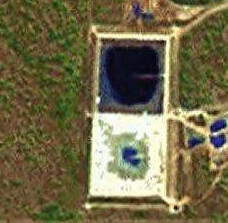Inadequate Gravel Road Training
Friday, October 3rd, 2008
Transporting a missile/rocket booster by semi. As the driver of that tractor, you’d think you’d be very well trained. You can never have too much training, as we read North Dakota’s Bismarck Tribune:
Cost to recover rocket booster: $5.6 million
By JAMES MacPHERSON
Associated Press WriterThe military says it cost $5.6 million to recover an overturned truck carrying an unarmed missile booster rocket in northwestern North Dakota.
The Air Force blamed "driver and safety observer error" for the July 31 incident. The truck carrying the booster for the unarmed Minuteman III intercontinental ballistic missile tipped over on a gravel road while being transported from the Minot Air Force Base to a launch facility 70 miles southwest. Two airmen were in the truck, which was accompanied by a security convoy.
"There were no injuries and the accident posed no danger to the public," the Air Force said in a statement.
The rocket booster and truck remained at the side of the road until Aug. 10, while investigators assessed the crash site.
Air Force spokeswoman Maj. Laurie A. Arellano said the recovery cost of $5.6 million included damage to the truck and its cargo.
"Inadequate gravel road training programs and the inability of 91st Missile Wing engineering personnel to accurately determine the safe load-bearing width of gravel roads along designated routes also contributed to the accident," the Air Force statement said.
The Air Force said the booster rocket is 66 feet long and weighs 75,000 pounds while the vehicle, trailer and rocket booster weighed more than 70 tons.
"While preparing to make a left turn, the driver and safety observer maneuvered the loaded tractor-trailer beyond the right edge of the reinforced gravel roadway and shoulder," the Air Force statement said.
"Basically, the procedure for large trucks is that they’re supposed to drive in the middle of the gravel road," Arellano said.
Arellano did not know Thursday if any airmen had been sanctioned.
They should have hired one of the drivers who race up Pike’s Peak in trucks. Take a look at this video clip:





